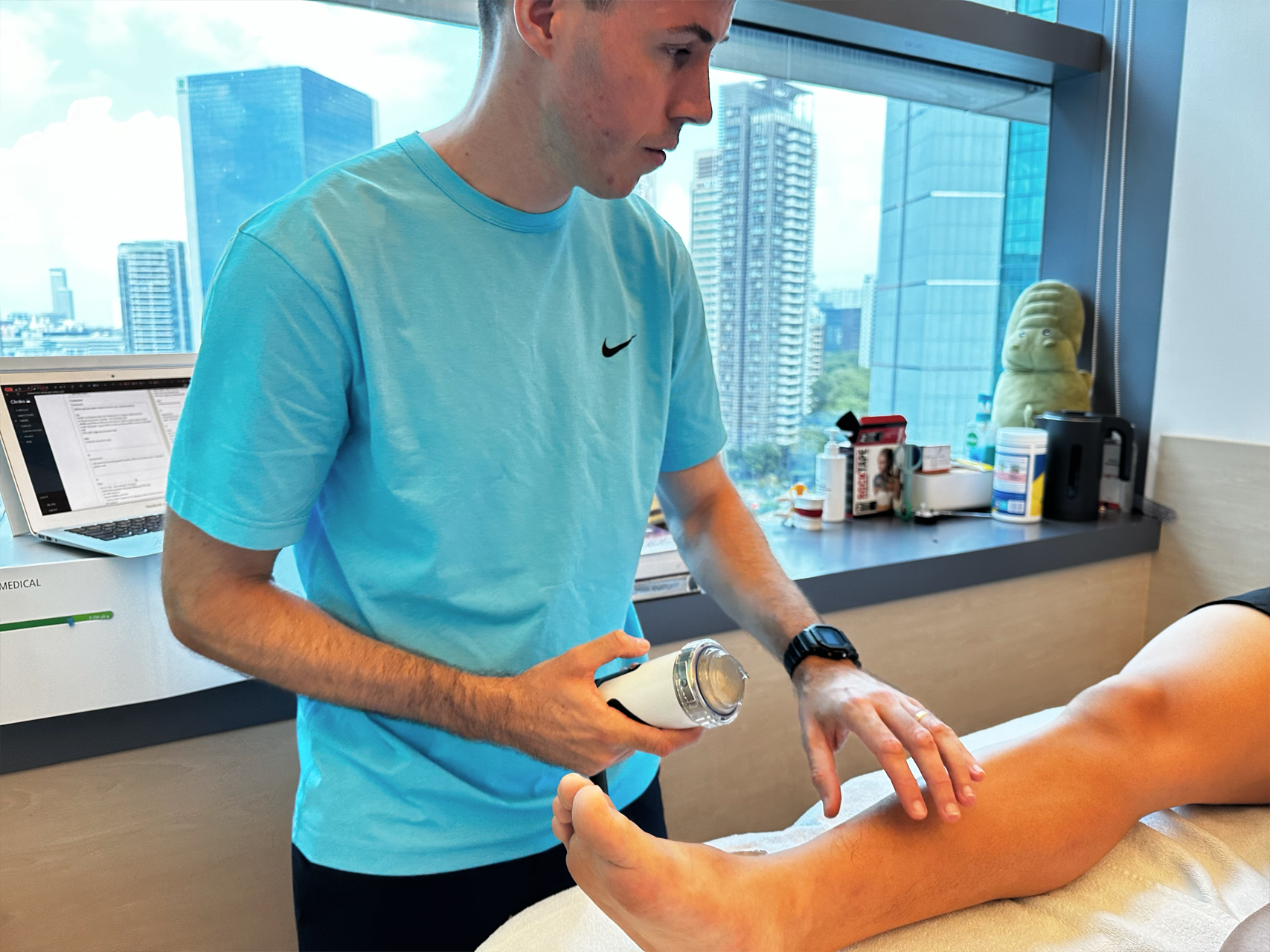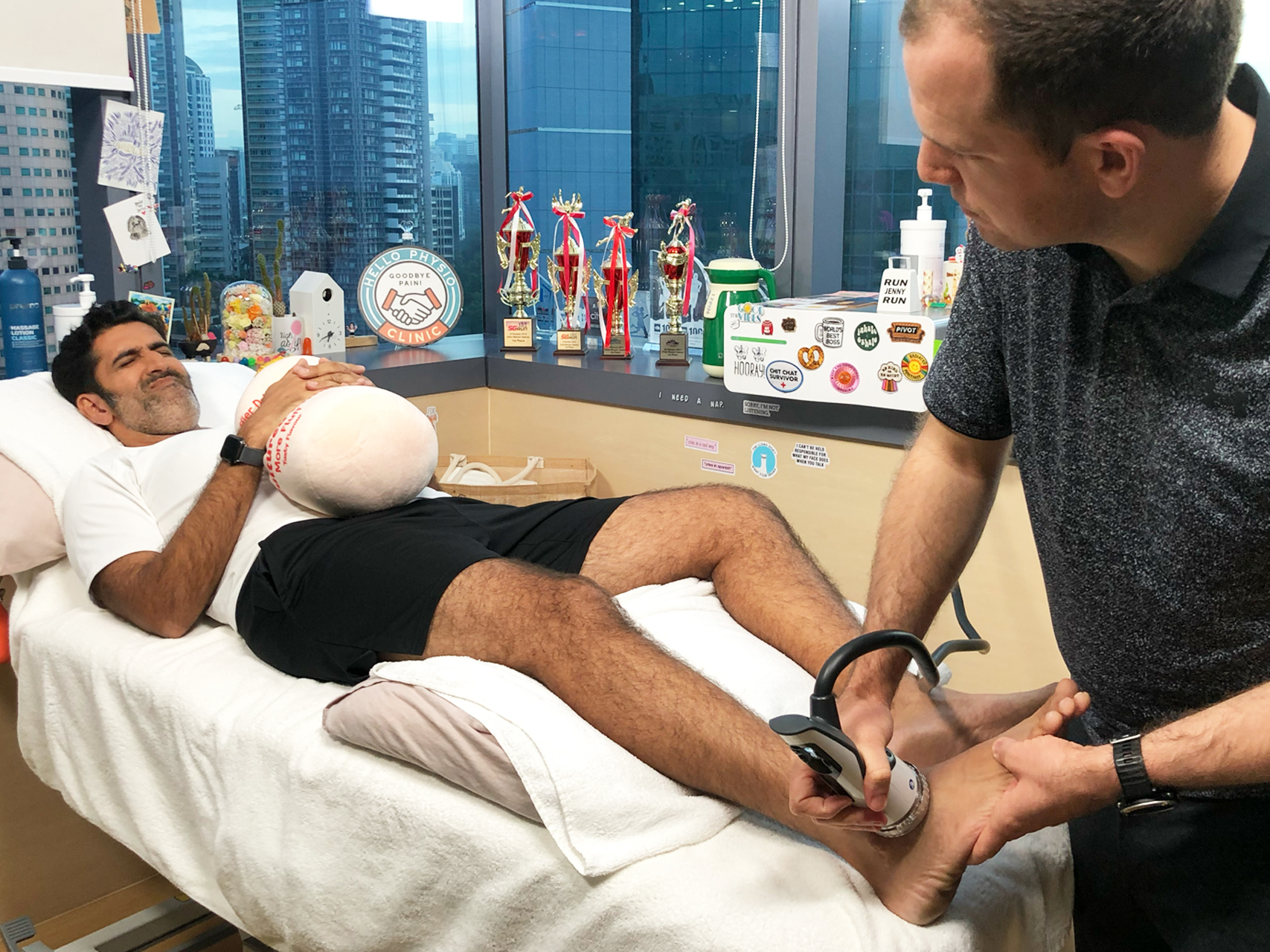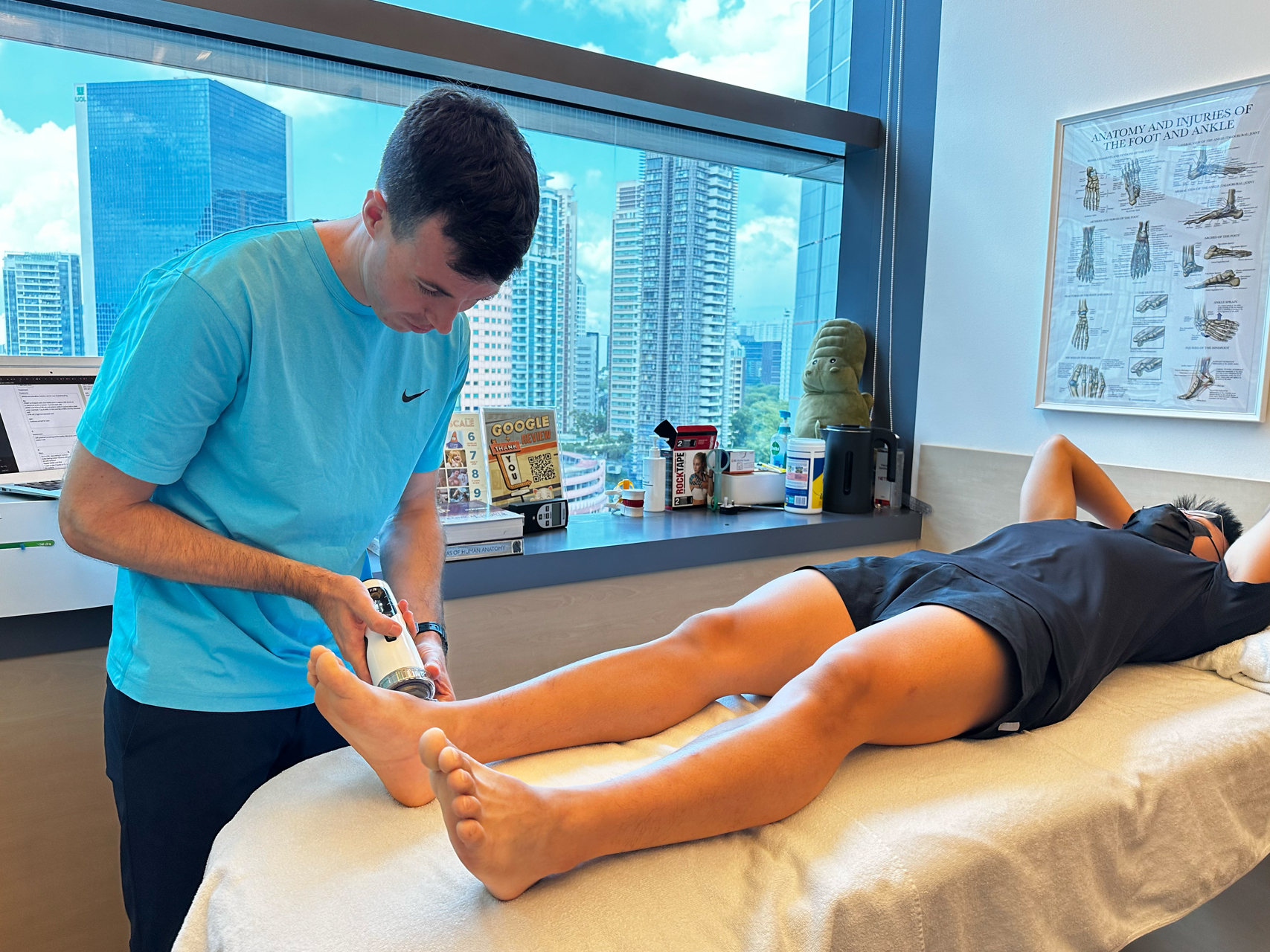A sprained foot is a common injury when the ligaments supporting the foot are stretched or torn. This can happen during various activities, from sports to walking on uneven surfaces. At HelloPhysio, we specialize in diagnosing and treating foot sprains to help you recover quickly and safely. Types of foot sprains include:
Lateral Foot Sprain: The most common type, affecting the outer side of the foot
Sprained Top of Foot: Involves ligaments on the upper part of the foot
Swollen Foot Sprain: Characterized by significant swelling and pain
The early signs of a sprained foot typically include sudden and sharp pain when bearing weight or moving the foot, accompanied by noticeable swelling around the affected area. The foot may be tender to touch, and bruising might develop a few hours after the initial injury.
Difficulty walking, reduced range of motion, and instability are common symptoms. Some individuals may experience a warm sensation in the affected area due to increased blood flow.
At the time of injury, you might have felt or heard a popping or tearing sensation. Muscle spasms in the foot or lower leg may also occur. The severity of these symptoms can vary depending on the grade of the sprain. If you suspect a foot sprain, it’s advisable to seek professional medical advice for proper diagnosis and treatment, as early intervention can help prevent further injury and promote faster healing.
How do you distinguish between a sprained foot and a more serious condition like a stress fracture?
To differentiate between a foot sprain and a stress fracture, it’s important to consider several key factors. Pain location is a crucial indicator. Foot sprains typically cause pain outside the foot or ankle, while stress fractures often result in pain on the top or bottom of the foot.
The severity of pain also differs, with stress fractures generally causing more intense pain, particularly during weight-bearing activities, compared to the mild to moderate pain associated with foot sprains. While both conditions can lead to swelling and bruising, stress fractures may exhibit more significant swelling and bruising due to the bone injury.

Range of motion is another distinguishing factor. Stress fractures can cause significant stiffness and limited mobility, whereas foot sprains may cause some stiffness but still allow some movement. Lastly, the duration of symptoms can be telling. Stress fractures typically take longer to heal and may cause persistent pain over time, while foot sprains usually show improvement within a few days to a week.
Your medical history is also important. Previous injuries or conditions, such as osteoporosis or nerve damage, may increase the likelihood of a more severe condition. Imaging tests like X-rays or an MRI may be ordered if a more serious condition is suspected. Consult a physiotherapist for a thorough evaluation to determine the severity of the injury and rule out more severe conditions.
Treatment for sprained foot at HelloPhysio
HelloPhysio offers comprehensive treatment for foot sprains, focusing on reducing pain, improving mobility, and enhancing functional recovery.
The recovery time for a sprained foot can vary depending on the severity of the injury. Generally, mild sprains may take about 2-4 weeks to heal, while moderate sprains might require 6-8 weeks. Severe sprains could take 3-6 months for a full recovery.

Here are the key aspects of their treatment approach:
- Manual Therapy: Techniques such as joint mobilizations, soft tissue massage, and myofascial release improve joint function, reduce pain, and enhance tissue healing.
- Adjunctive Treatments: Advanced modalities like INDIBA® Activ, Shockwave Therapy, sports massage, dry needling, and Red Light Therapy can significantly enhance the recovery process.
- Exercise Rehabilitation: A tailored exercise program is designed to strengthen weak muscles, improve biomechanics, and enhance functional recovery. Exercises may include ankle strengthening, toe curls, and calf raises.
- Complementary Therapies: Techniques like taping and bracing provide additional support and stability to the ankle joint.
Each patient receives a customized treatment plan tailored to their needs and goals. By combining these approaches, our team of expert physiotherapists provides a comprehensive treatment program to help individuals recover from foot sprains and achieve optimal musculoskeletal function. Schedule an appointment today at HelloPhysio for your sprained foot.

